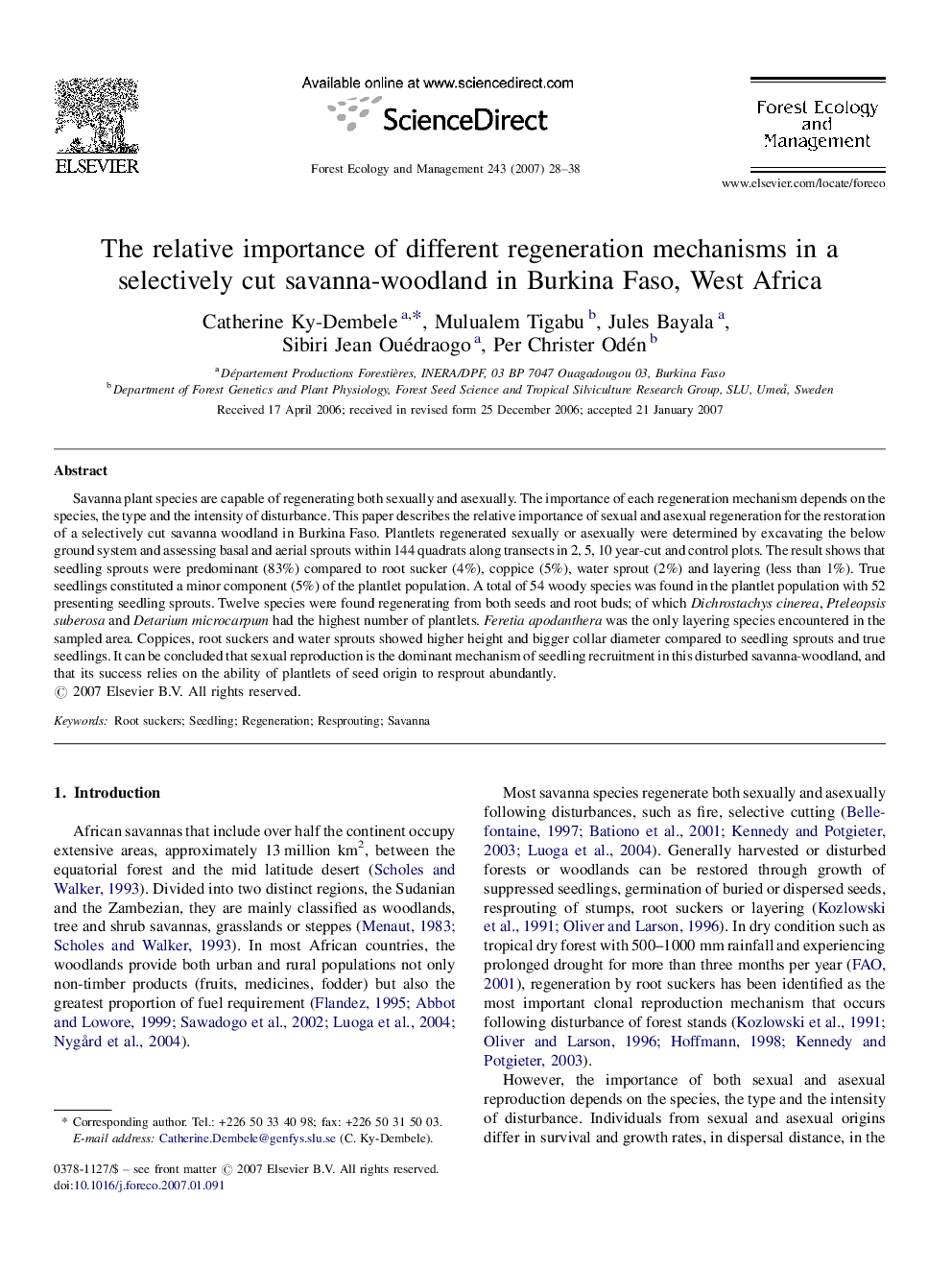| Article ID | Journal | Published Year | Pages | File Type |
|---|---|---|---|---|
| 90745 | Forest Ecology and Management | 2007 | 11 Pages |
Savanna plant species are capable of regenerating both sexually and asexually. The importance of each regeneration mechanism depends on the species, the type and the intensity of disturbance. This paper describes the relative importance of sexual and asexual regeneration for the restoration of a selectively cut savanna woodland in Burkina Faso. Plantlets regenerated sexually or asexually were determined by excavating the below ground system and assessing basal and aerial sprouts within 144 quadrats along transects in 2, 5, 10 year-cut and control plots. The result shows that seedling sprouts were predominant (83%) compared to root sucker (4%), coppice (5%), water sprout (2%) and layering (less than 1%). True seedlings constituted a minor component (5%) of the plantlet population. A total of 54 woody species was found in the plantlet population with 52 presenting seedling sprouts. Twelve species were found regenerating from both seeds and root buds; of which Dichrostachys cinerea, Pteleopsis suberosa and Detarium microcarpum had the highest number of plantlets. Feretia apodanthera was the only layering species encountered in the sampled area. Coppices, root suckers and water sprouts showed higher height and bigger collar diameter compared to seedling sprouts and true seedlings. It can be concluded that sexual reproduction is the dominant mechanism of seedling recruitment in this disturbed savanna-woodland, and that its success relies on the ability of plantlets of seed origin to resprout abundantly.
